Using the Deep Space Network antenna, scientists have gathered new radar data on asteroid 2006 DP14 that show the physical characteristics of the asteroid and measure its exact distance from Earth.
Radar data of asteroid 2006 DP14 were obtained on February 11, 2014. The asteroid is about 1,300 feet (400 meters) long, 660 feet (200 meters) wide. Credit: NASA/JPL-Caltech/GSSR
A collage of radar images of near-Earth asteroid 2006 DP14 was generated by NASA scientists using the 230-foot (70-meter) Deep Space Network antenna at Goldstone, California, on the night of February 11, 2014.
Delay-Doppler radar imaging revealed that the asteroid is about 1,300 feet (400 meters) long, 660 feet (200 meters) wide, and shaped somewhat like a big peanut. The asteroid’s period of rotation is about six hours. The asteroid is of a type known as a “contact binary” because it has two large lobes on either end that appear to be in contact. Previous radar data from Goldstone and the Arecibo Observatory in Puerto Rico has shown that at least 10 percent of near-Earth asteroids larger than about 650 feet (200 meters) have contact binary shapes like that of 2006 DP14. The data were obtained over an interval of 2.5 hours as the asteroid completed about half a revolution. The resolution is about 60 feet (19 meters) per pixel.
The data were obtained on February 11 between 9:03 a.m. and 11:27 p.m. PST (12:03 a.m. to 2:27 a.m. EST on February 12). At the time of the observations, the asteroid’s distance was about 2.6 million miles (4.2 million kilometers) from Earth. That is about 11 times the average distance between Earth and its moon. The asteroid’s closest approach to Earth occurred on February 10, at a distance of about 1.5 million miles (2.4 million kilometers).
Radar is a powerful technique for studying an asteroid’s size, shape, rotation state, surface features and surface roughness, and for improving the calculation of asteroid orbits. Radar measurements of asteroid distances and velocities often enable computation of asteroid orbits much further into the future than if radar observations weren’t available.
NASA places a high priority on tracking asteroids and protecting our home planet from them. In fact, the United States has the most robust and productive survey and detection program for discovering near-Earth objects. To date, U.S. assets have discovered more than 98 percent of the known near-Earth objects.
In addition to the resources NASA puts into understanding asteroids, it also partners with other U.S. government agencies, university-based astronomers, and space science institutes across the country that are working to track and understand these objects better, often with grants, interagency transfers and other contracts from NASA.
NASA’s Near-Earth Object Program at NASA Headquarters, Washington, manages and funds the search, study and monitoring of asteroids and comets whose orbits periodically bring them close to Earth. JPL manages the Near-Earth Object Program Office for NASA’s Science Mission Directorate in Washington. JPL is a division of the California Institute of Technology in Pasadena.

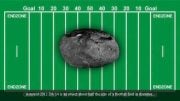
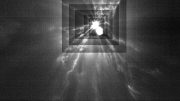
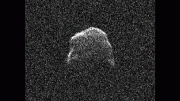
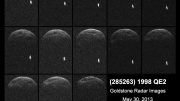
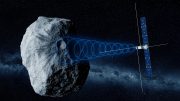
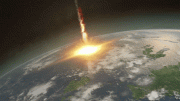
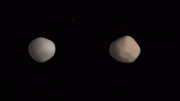
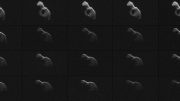
Be the first to comment on "New Radar Images of Near-Earth Asteroid 2006 DP14"